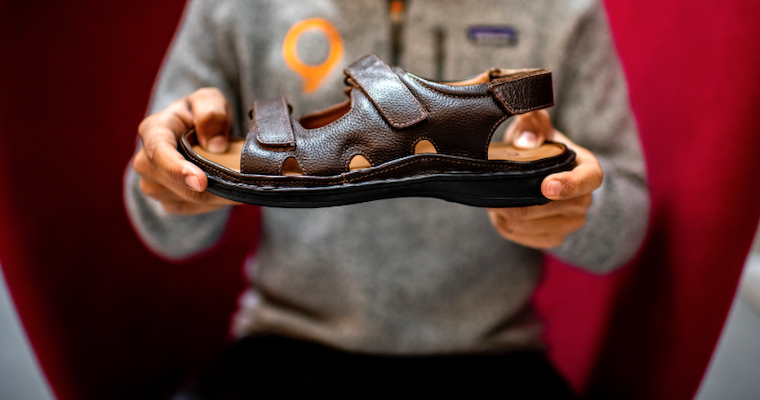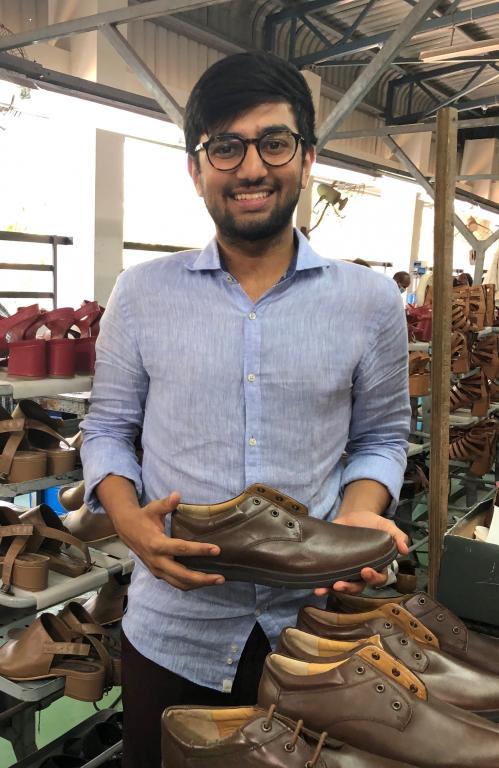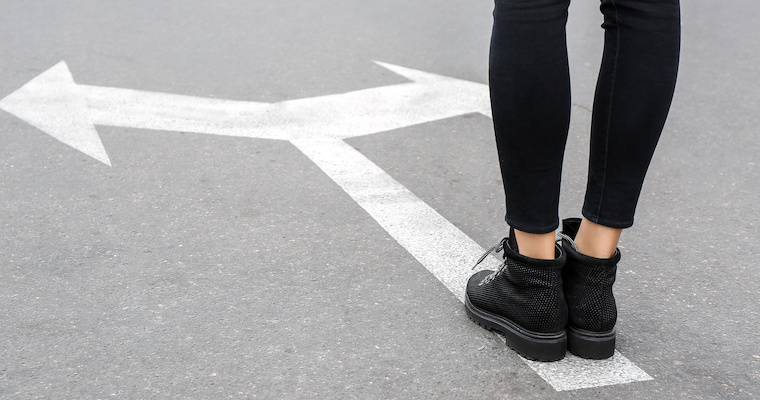Helping Diabetics Be Comfortable in Their Own Shoes

Editor's Note: This is the first in a series of articles featuring past winners of eFest, EIX's undergraduate business plan competition, and their journey since then.
Vidhan Bhaiya, CEO of the diabetic footwear manufacturer Dr. Brinsley, was at a "big fat Indian wedding" when he noticed his uncle, the style icon of the family, looked uncomfortable.
"He didn't want to get up from his table and went right at the back during the family photograph," recalls Bhaiya on his company's website. He learned from his dad that his uncle, a diabetic, had recently been told to wear diabetic footwear and didn’t like how it looked.
The experience introduced Bhaiya to a common stigma associated with traditional diabetic footwear: it's expensive, bulky and unattractive, but going without it risks foot and joint pain and, at worst, amputation. The right footwear can reduce foot amputation by more than 50%.
After that wedding, Bhaiya vowed to do something about it. In January 2019, when he was a Northeastern University undergraduate, Bhaiya officially registered his own diabetic footwear company, Dr. Brinsley, in his home country of India. Bhaiya and partner Danny Kim went on to win the Global Impact Award at the 2019 eFest, and put the $10,000 prize money toward manufacturing costs and developing a new line of sandals and slippers for women.

Fast forward to today, and Dr. Brinsley is continuing to attract new fans among diabetics who want fashionable shoes, and expand into more sales outlets and parts of the world. Now a senior chemical engineering major at Northeastern University, Bhaiya works part-time with the company while finishing his degree. Kim is in his fourth year as a pharmacy student at Northeastern. And Bhaiya's uncle -- now a Dr. Brinsley customer -- enjoys wearing shoes again.
Here's a look at where the company is now.
|
The Product: |
Diabetic shoes and sandals, for men and women, that look like regular shoes and sandals. Along with being fashionable, they are engineered for stability, proper cushioning to relieve pressure on joints, and special curvature to protect the sole of the foot from damage. They also cost less than regular diabetic shoes, retailing for $10 to $40. |
| Potential Market: | Their total addressable market is 30 million diabetic patients, with a target market of 3 million diabetics. There are more than 90 million diabetics in India alone, one of the leading countries in diabetes rates. Bhaiya explains that essentially every household has someone who is diabetic. Diabetics in India are also 10 to 20 times more likely than non-diabetics to have their feet amputated. |
|
Stage of Development: |
Dr. Brinsley has seven total slippers, sandals and shoes currently in the marketplace, though production has halted due to the COVID-19 pandemic. |
|
Annual Sales: |
Not Disclosed |
| Idea for the Product: |
Vidhan Bhaiya's uncle, a diabetic unhappy with the look of his footwear, inspired the creation of Dr. Brinsley. The family also has been involved in the leather business for more than four decades, and "Richard Brinsley" was the name of a former brand. |
| Traction: |
Dr. Brinsley's shoes and sandals are sold today at more than 85 hospitals and clinics, mostly in India. Their primary partnership is with Apollo Hospitals, the largest hospital chain in India by market capitalization. Bhaiya has also appointed a distributor for all of Southern Africa and begun selling products in Singapore. |
| Honors and Accolades: |
Along with winning eFest, in 2020 Dr. Brinsley was also a finalist in Northeastern's RISE competition, which brings together more than 2,000 industry leaders, researchers, inventors, investors and others to celebrate more than 400 innovations that originated at the school. |
| Biggest challenge: | COVID-19 completely halted Dr. Brinsley shoe-manufacturing, which relies on various small components sourced from different vendors. Those have also reduced their operations due to the pandemic, putting great stress on the supply chain as a whole. |
|
How they’re dealing with the challenge: |
Bhaiya has kept in touch with both its staff and customers using the social channels of their website. The company has focused on showing their diabetic customers how to take proper care of themselves while they remain stuck at home with fewer opportunities for exercise and healthy dieting. In that regard, Bhaiya thinks they have continued to provide value to their customers despite recent setbacks in footwear production and delivery. They hope to have the supply chain working again by end of July or early August. |
| Teammates: | Partner Danny Jooyoung Kim is a fourth-year pharmacy student at Northeastern. Dr. Brinsley also has four more employees working in India. |
|
Mentors and Advisors: |
The Bhaiya family's connections in the leather business helped Dr. Brinsley negotiate partnerships with suppliers. Bhaiya also spoke with over 400 diabetes doctors, patients and podiatrists in India to understand what was needed from diabetic footwear, talked with shoemakers in Italy and consulted with US-based diabetic footwear experts. Dr. Kimberly Eddleston advised the company at Northeastern University. |
|
Resources at the college that helped: |
Bhaiya cited Dr. Mark Sivak, Dr. Marc Meyer and Prof. Bob Lentz at Northeastern University as "phenomenal mentors" in thought leadership fields including prototyping, business modeling, family business and pitching respectively. He also worked with IDEA: Northeastern University's Venture Accelerator, Generate: Northeastern's Product Design Studio, NU Health Sciences Entrepreneurs, University Scholars Program and University Honors Program, all of which were quite helpful in his project's development. |
Top Photo by Matthew Modoono/Northeastern University
Read More:





